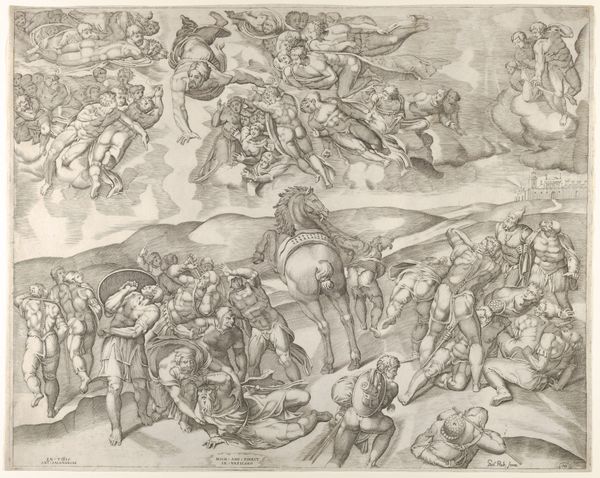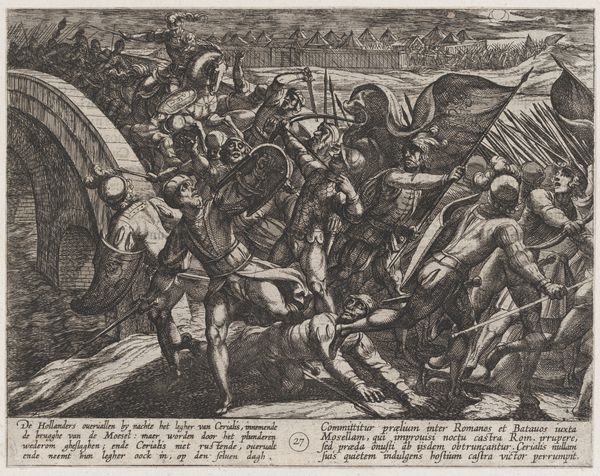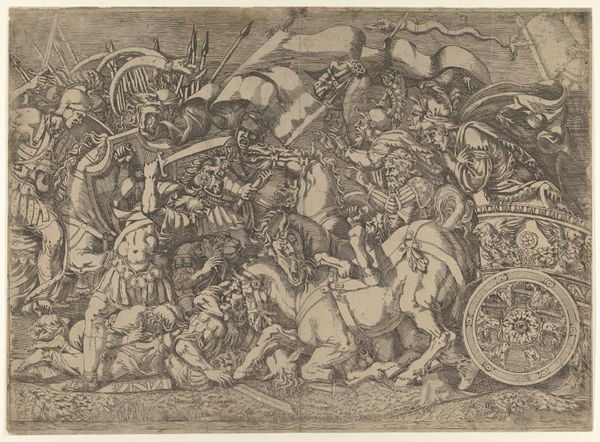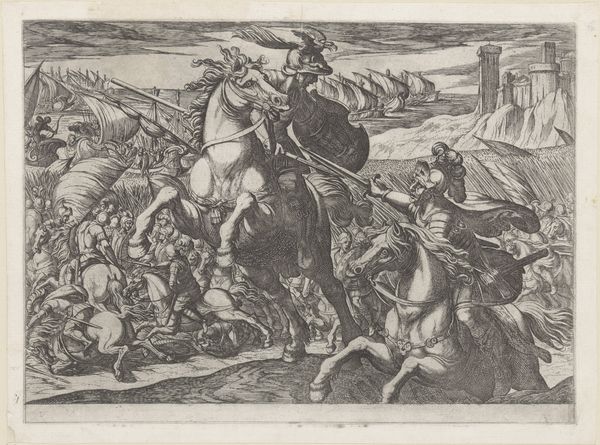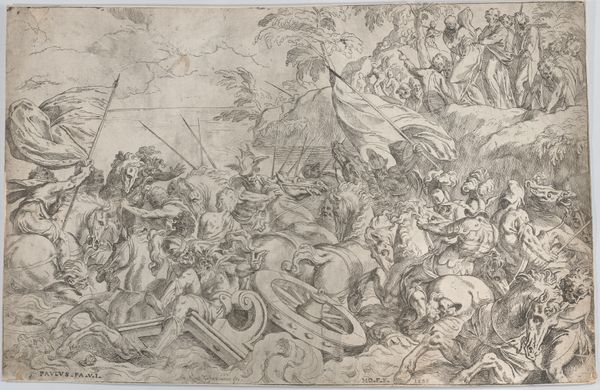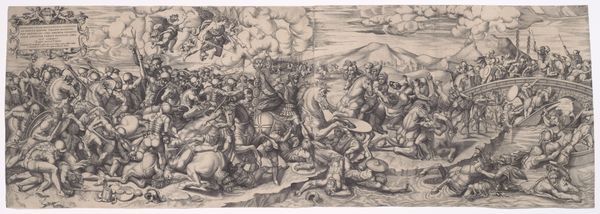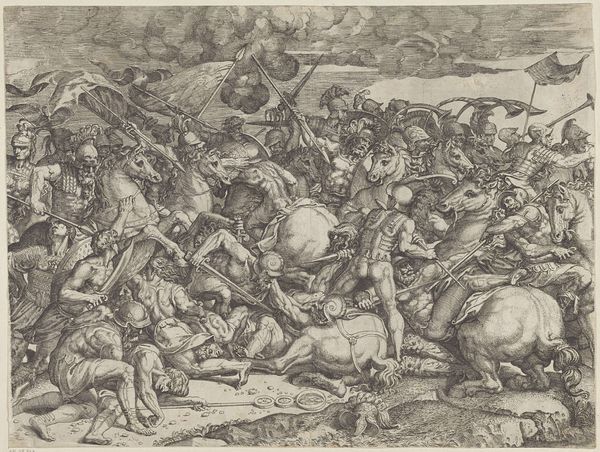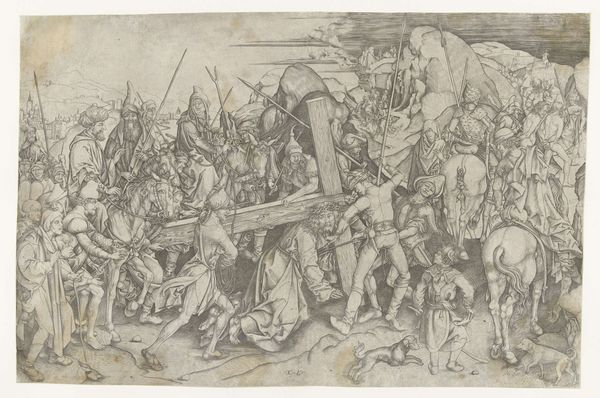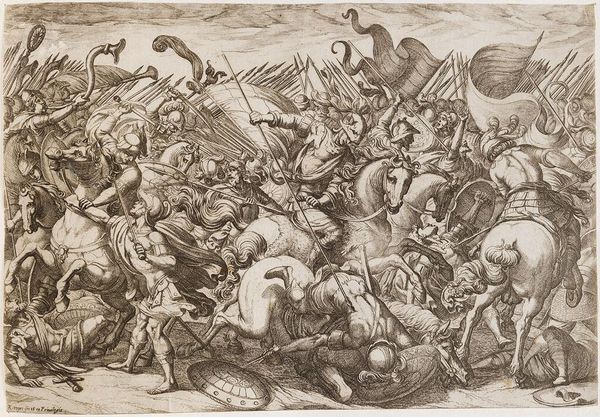
drawing, print, engraving
#
drawing
#
narrative-art
# print
#
mannerism
#
figuration
#
history-painting
#
engraving
Dimensions: Sheet (trimmed): 12 5/8 × 17 3/16 in. (32 × 43.7 cm)
Copyright: Public Domain
Curator: Here we have Antonio Fantuzzi’s engraving, “Revenge of Nauplius,” dating back to 1540-1545. It resides here at the Metropolitan Museum. Editor: Whoa, what a scene! Chaotic, intense, it feels like a storm is brewing both on the water and in the air. Look at those figures, tumbling out of ships, clearly a narrative unfolding. Curator: Precisely. Fantuzzi, deeply embedded in the Mannerist style, utilizes printmaking techniques to portray a very dramatic narrative from classical mythology. It speaks to the social function of prints to broadly communicate visual and literary culture. The engraving process itself is laborious, allowing for the creation of multiples to spread this story widely. Editor: Laborious is the word. I can only imagine the effort etching these fine, interwoven lines, especially to achieve such dynamism! Is it me, or is the material a character here too? The way the light catches the metallic sheen on the paper gives the whole thing an almost ominous feeling. It brings to mind dark myths and moral implications. Curator: It does add another layer. And looking closely, it is important to see that the narrative details show Nauplius enacting his revenge against the Greek fleet returning from Troy, tricking them with false lights into shipwreck on the treacherous coast. A dark subject, indeed. Considering the history and availability of engraving at the time, the choice of material and medium meant a story of this kind was reaching much larger audiences than painting ever could. Editor: It makes one think of all the invisible labor embedded in producing this, from the miners extracting the metals for the plates, to those who actually made and sold the artwork in the markets of Europe. But aside from that, what I appreciate is the rawness. It feels almost unpolished, but utterly engaging because of the sense of urgency in this depiction of tragedy. It sparks a dialogue between craftsmanship and artistic expression in a powerful manner. Curator: Indeed, Fantuzzi masterfully navigates those dialogues. Examining its cultural moment and means of production is deeply enriching. Editor: Right! A fascinating reminder that even in the 16th century, revenge was a dish best served…engraved.
Comments
No comments
Be the first to comment and join the conversation on the ultimate creative platform.
